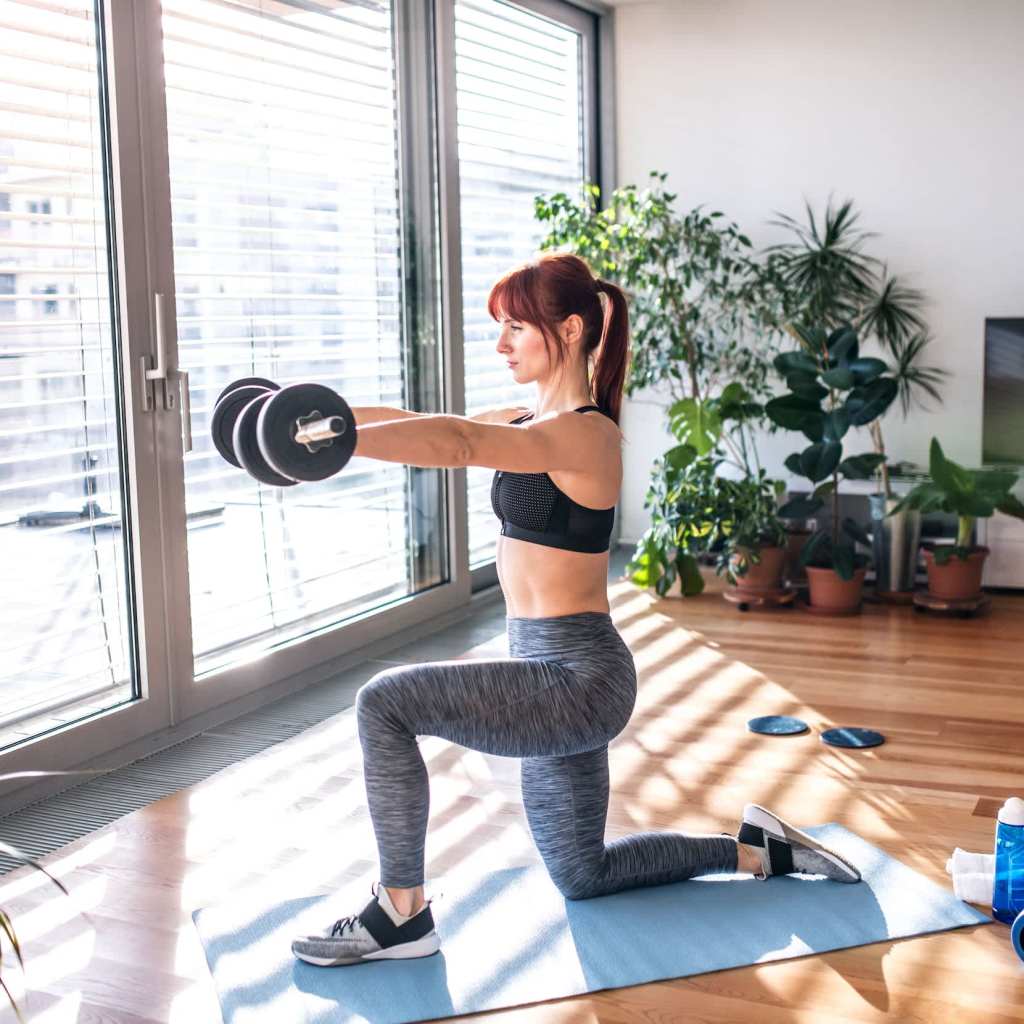For building muscle, burning fat and calories, and even improving your mood, strength training is where it’s at.
But, like with any other exercise method, the potential for injury is real if form and safety measures aren’t taken seriously. Before jumping into a strength-training routine at home, check out these essential tips from certified strength coaches:
Clear Out a Safe Space
Falling over a coffee table or tripping over your dog’s toy are very real concerns when it comes to working out at home.
Save yourself the stress (and aches) by moving furniture and clutter out of the way, or find an empty, safe space before jumping into your workout, Matt Kite, BS, CSCS, USAW-L1SP, and master coach for D1 Training, suggests.
“Make clear boundaries so no little humans or dogs can invade or accidentally walk into your workout.”
Follow a Well-Rounded, Balanced Routine
One of your fitness goals might be strengthening your biceps and triceps – but that doesn’t mean you should focus on arms every single day.
“Having a holistic approach to train different areas of the body throughout the week will not only ensure you’re maximizing the benefits of working out, it can also mitigate risk of overtraining and injury,” Kite explains.
Instead, assign areas of the body for different days and spread out the intensity. For example, Kite says you may focus on upper body strength and low volume on Tuesdays, light cardio, mobility, rest, and recovery on Wednesdays, and lower body strength and low volume on Thursdays.
This muscle-building workout plan will help you create your own schedule.
Incorporating other types of training – balance, cardio, and flexibility, for example – can also help you meet your strength training goals, Rachel Straub, MS, CSCS, author of Weight Training Without Injury, says.
“When you have better cardio, you tire less easily. When you have better balance, you can incorporate more advanced strength training exercises (such as single-leg exercises). When you have better flexibility, you can achieve the proper range of motion, which makes strength training more effective,” she notes.
Related: I’m a Trainer, and This 4-Week Beginner’s Program Will Teach You How to Lift Weights
Listen to Your Body
Online fitness videos can help you switch up your routine and even teach you new exercises, but Straub urges you to listen to your body when a move doesn’t feel quite right. And if a modification is offered, there’s no shame in taking it.
“Just because the instructor on TV or YouTube is doing X sets and Y reps does not mean you have to! Yes, getting in shape takes effort, but remember the person on the screen can’t see what you are doing. Use good judgment and listen to your body!” she says.
Be Cautious With Equipment
“When strength training at home, chances are you are using different equipment than when you are at the gym,” Straub notes. “Whatever you are using, always make sure you are comfortable with the basic movement before adding any props!”
So, if you’ve never used a kettlebell before, you might not want to jump right into kettlebell swings.
“While I love challenging myself and trying new things, it’s probably not the best idea while training alone or at home. Stick to what you know, and go crush it,” Kite agrees.
Consult With a CPT
If you want more direction or the advice of a professional, sign up for virtual training with a certified personal trainer (CPT) or coach – many gyms and fitness studios are offering this amenity while social distancing.
“Our coaches at D1 do this every day with athletes across the country through daily accountability texts and zoom call workouts via our D1toU app,” Kite says. “Trainers can help you devise a plan that is fun, simple, effective, and SAFE.”
Click here for more health and wellness stories, tips, and news.

